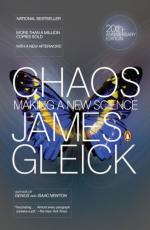
|
| Name: _________________________ | Period: ___________________ |
This quiz consists of 5 multiple choice and 5 short answer questions through chapters 7-8.
Multiple Choice Questions
1. One of the implications of what theorem is that if a continuous discrete dynamical system on the real line has a periodic point of period 3, then it must have periodic points of every other period?
(a) Skawinski's theorem.
(b) Stronghorn's theorem.
(c) Stevenson's theorem.
(d) Sharkovskii's theorem.
2. What mathematical term refers to a bifurcation in which the system switches to a new behavior with twice the period of the original system in a discrete dynamical system?
(a) Dynamic equilibrium.
(b) Period doubling bifurcation.
(c) The Navier-Stokes equation.
(d) Software visualization.
3. What book did Michael Barnsley publish in 1988?
(a) Deterministic Nonperiodic Flow.
(b) The Structure of Scientific Revolutions.
(c) Fractals Everywhere.
(d) Physical Review Letters.
4. Robert May, like many before him, was confused by the changes when what was increased?
(a) Gradient.
(b) Laminar flow.
(c) A parameter.
(d) Energy.
5. What is a measure of some property of a piece of software or its specifications?
(a) Software metric.
(b) Software visualization.
(c) Cosmic arrhythmias.
(d) Fractal compression.
Short Answer Questions
1. Through this work on the study of quantum behavior of superfluid helium, Albert Libchaber invented what?
2. In what year did Mitchell Feigenbaum complete his doctorate with a thesis on dispersion relations?
3. Where was Gustav Mahler born?
4. Who is attributed with the following quote in Chapter 5, "Strange Attractors": "Big whorls have little whorls which feed on their velocity, and little whorls have lesser whorls and so on to viscosity"?
5. What is a description of a system using mathematical concepts and language?
|
This section contains 259 words (approx. 1 page at 300 words per page) |

|




